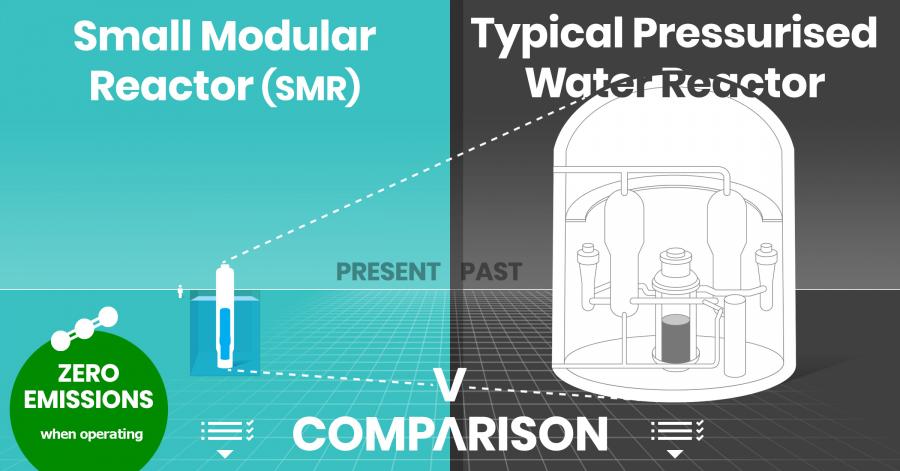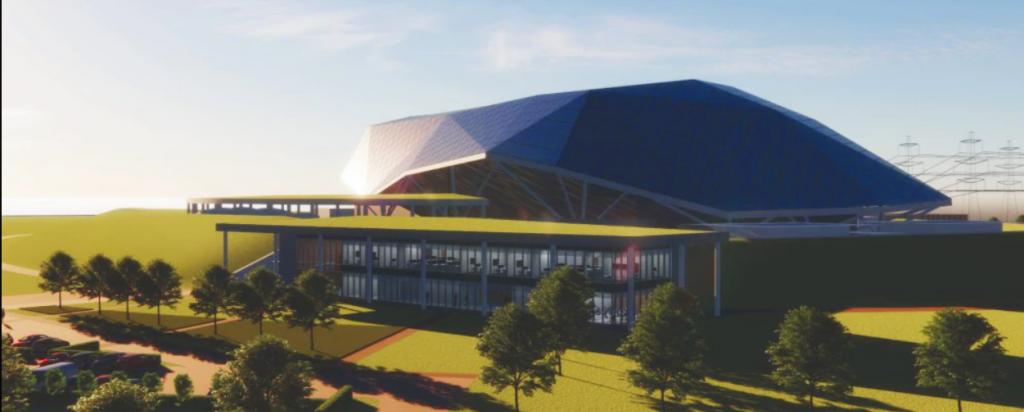

Published on the 12th August 2021 by ANSTO Staff
Please note that this content was current at the time of publishing (August 2021).
ANSTO is home to Australia’s expertise in nuclear science and technology and provides advice to Government on developments relating to new and emerging nuclear power technologies. This includes advanced reactors, such small modular reactors also commonly referred to as SMRs, Generation IV reactors and looking further ahead to the possibility of fusion energy.
The Australian Government recently signed a landmark emissions reduction technology deal with the United Kingdom, which includes nuclear energy and clean hydrogen among the six key low emission technologies the two countries hope to advance.
Last year, the Australian Government released Australia’s Technology Investment Roadmap. In the roadmap, small modular reactors are identified as a “watching brief technology”. While Australia has a moratorium on nuclear generation and the Government does not plan to lift it without bipartisan support, for watching brief technologies, the Government will continue to monitor international developments and ensure Australian households and businesses are able to exercise consumer choice and adopt the latest technologies, where it makes sense for them to do so.
Under the agreement, Australia and the UK will collaborate on research and share new knowledge in relation to new nuclear power technologies -small modular reactors, as well as scalable and commercially viable storage.

The Minister for Energy and Emissions Reduction the Hon Minister Angus Taylor MP has said that the agreement aligned with Australia’s technology-led approach.
“This partnership is aligned with Australia’s technology-led approach to reducing emissions and will help deliver on the goals of the Technology Investment Roadmap,” said Minister Taylor in a media statement.
“Prof Andrew Peele, ANSTO Group Executive, Nuclear Science and Technology, welcomed the announcement of the partnership, saying, “With our existing ties to research and nuclear organisations in the UK, there is a natural opportunity for ANSTO to contribute to this work.”
“Our expertise in SMRs and Generation IV reactors will mean that Australia has homegrown knowledge and expertise in relation to these emerging technologies,” said Peele.
As a member if of the International Atomic Energy Agency (IAEA), ANSTO monitors and contributes to developments relating to SMRs globally.
Through its representation of Australia in the Generation IV International Forum, ANSTO also keeps a keen eye on the potential future use of advanced nuclear reactors in clean hydrogen production, particularly through involvement in the collaborative research and development of very high-temperature reactors.
Recently the IAEA reported that steps are underway at the international and industry levels for a coordinated approach to the economics of developing SMRs and issues around regulation for future deployment. ANSTO is contributing to this effort as reported on our website.
This week, the IAEA published a comprehensive Technology roadmap for small modular reactor deployment (iaea.org).
In June the IAEA announced a series of virtual workshops on economic aspects associated with different generations of nuclear power reactors as the need for climate change mitigation and sustainable development drives growing global interest in SMRs and other emerging reactor technologies.
The IAEA has stated that emerging reactor concepts like SMRs are among the most promising emerging technologies in nuclear power and have the potential to play a key role in the clean energy transition, particularly in contributing to the decarbonization of hard-to-abate sectors such as industry and heat.
Recognising the increasing global interest in SMRs, which are expected to become an option for flexible generation for a wide range of users and applications including in the developing world, the IAEA recently established a platform to provide integrated support to Member States on all aspects of their development, deployment and oversight. Read more
The IAEA is facilitating knowledge exchange on the regulation considerations through an SMRs Regulators Forum and the provision of resources.
The Fusion Energy Moonshot
Fusion is the nuclear reaction that powers the sun and the stars and scientist believe is a potential source of safe, zero carbon-emitting and limitless energy. Harnessing fusion power is the goal of ITER, which has been designed as a key experimental step between today’s fusion research machines and tomorrow’s fusion power plants.
Fusion energy at its essence is the concept of being able to replicate how the sun generates energy limitlessly here on earth. ANSTO and other Australian research teams have contributed to the ITER project over many years – a global research collaboration to move the world closer to realising this possibility.
In addition to contributing to plasma diagnostics and other activities to support the ITER project in association with other Australian research teams, ANSTO tracks progress on the development of other fusion technologies internationally.
In a recent announcement, the Institute for Frontier Materials at Geelong’s Deakin University has just received Australian Research Council (ARC) Linkage grants to work with HB11 Energy Holdings to explore the safe energy storage potential of boron nitride nanosheets.
Professor Ying (Ian) Chen plans to develop a radiation-free, proton-boron fusion power source, part of a program to prove HB11’s viability by achieving fusion net energy gain.
He anticipates that the research will include production of a new H11B nanomaterial with high hydrogen storage capacity, a new method for the synthesis of boron nitride (BN) nanosheets and a deep understanding of the mechanism of hydrogen storage and the proton-boron fusion reaction. Read more
ANSTO physicist Dr Mark Ho has contributed computational modelling to the research undertaken by Prof Hora and to the HB11 work.
“Prof Heinz Hora and his team have done some impressive work on hydrogen boron fusion,” said Dr Richard Garrett, ANSTO liaison on ITER fusion energy project.
“This s a welcome announcement as it will allow the work to progress further with potential clean energy benefits for Australia,” said Garrett.